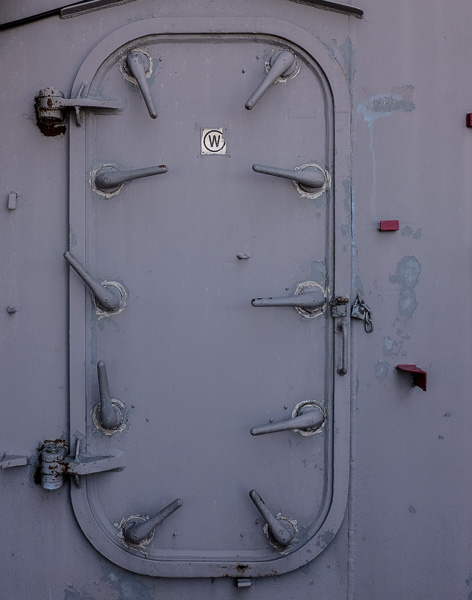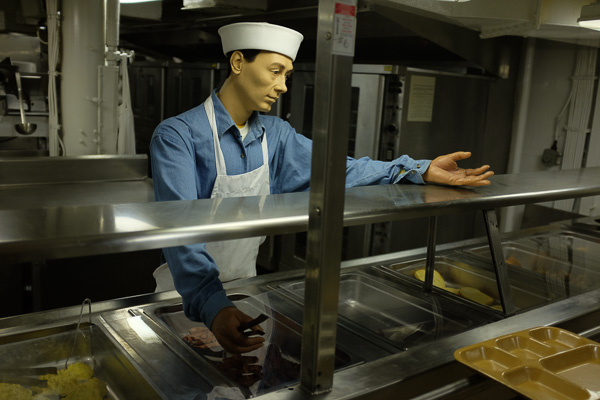I just read this wonderful biography of the mathematician and recreational-math maven par excellence, John Horton Conway, best known (to his mild annoyance) as the inventor of the cellular automaton rule known as the Game of Life. The book, Genius at Play , is by Siobhan Roberts.
Some great quotes. John Conway’s daughter: “There goes somebody looking strange. Ergo, it must be a friend of Dad’s!”

[This photo has no literal connection to what I’m talking about, although the musician is, in a way, like Conway. It was shot inside the San Jose California Theater during the Jazz Festival, it’s a group called Bombay Jazz.]
A lot of my favorite mathy people are in the book, many of whom I’ve managed to meet over the years: Kurt Gödel, Stephen Wolfram, Bill Gosper, Martin Gardner, and more. Bill Gosper (discoverer of the Life glider gun): “Conway is approximately the smartest man in the world.”
One of the things Conway is most proud of is his expansion of the familiar real number line so as to become the so-called surreal numbers. The surreal numbers are very densely packed—technically speaking there’s so many of them that they comprise what set-theorists call a “proper class,” which is a collection so vast that it is in some sense impossible to think of it as a finished thing. The less daunting collections are called sets: an example is the collection of all subsets of the set of finite natural numbers {0,1,2,3,…}. This “power set of the natural numbers” is the same size as the set of all real numbers.

[Original Tenniel drawing of Carroll’s Alice holding a baby who turns into a pig.]
So how do the surreal numbers arise? There’s a good popular book about them: Donald Knuth’s Surreal Numbers, available in paperback and also for free online. The basic idea is fairly simple. Whenever you have a set L of numbers that are smaller than the numbers in a different set R, then there is going to be a surreal number in between the two sets…the number can be called {L | R}.
In the regular real number system we use a principle like this to say that there’s a number on the line just beyond 3, 3.1, 3.14, 3.141, 3.1415, 3.1459, etc. This number is our friend pi.

In Conway’s system, we go further, and squeeze more and more stuff in. Like there’s a number that’s bigger than 0, but smaller than 1/2, 1/3, 1/4, … , 1/n, … for all finite n. This infinitesimal number can be called 1/omega, where omega is a name often used for the simplest infinite number that lies beyond 1, 2, 3, …, n, …
In Conway’s rich system, however, omega isn’t the very first infinite number, you’ve got omega-1, omega / 2, and even the square root of omega.

Getting technical, the surreal numbers are what the early 20th C mathematician Felix Hausdorff would call an eta-On set, where On is the class of all finite and transfinite ordinal numbers—an ordinal being a generalized counting number. The class On is a subset of the surreal numbers…like the spine of integers inside the real number line. On goes on and on, including infinite numbers like alef-null, alef-one, and so on. When we fill in the surreal numbers, we can have cool things like (((alef-one divided by (square root of alef-one)) minus (pi divided by alef-seventeen) divided by two) minus 48.) It’s all there!

The surreal numbers make up what we can call an “Absolute Continuum” where there’s always yet another number lurking between any successive pairs of sets of numbers. Physics would make more sense, suggests Knuth, if it was based on surreal numbers instead of the so-called real numbers, and I think he’s right. Assume we have endlessly transfinite infinitesimals in the small, and space gets really smooth.

I’m fascinated by the notion that our physical space is in fact an absolute continuum. This is what we might call “infinities in the small” instead of “infinities in the large.” I’ve always felt that it’s a mistake to simply stare out at the stars and yearn for the vastness out there. In my opinion, we have huge infinities right here. Underfoot.

In a slightly different vein, the founder of transfinite number theory, Georg Cantor wrote a couple of great passages.
“The fear of infinity is a form of myopia that destroys the possibility of seeing the actual infinite, even though it in its highest form has created and sustains us, and in its secondary transfinite forms occurs all around us and even inhabits our minds.”

“The actual infinite arises in three contexts: first when it is realized in the most complete form, in a fully independent otherworldly being, in Deo, where I call it the Absolute Infinite or simply Absolute; second when it occurs in the contingent, created world; third when the mind grasps it in abstracto as a mathematical magnitude, number or order type.”

I wrote about infinity in two of my pop math books, Infinity and the Mind and Mind Tools. But getting back to the idea of the absolute continuum, let’s just marinate a little more in the idea that physical space is not *feh* quantized, and it’s not just some mere real number line—it might have levels, sublevels, subsub………subsublevels. Inconceivably rich smoothness.

That quantum bump stuff is just a glitch, like a rumble strip by a toll booth, we trundle past that in our Shrink-O-Tron device, going ever downward in our hypertransfinite subdimensional bathyscaphe. In 2008, the ezine Tor.com published my SF story along these lines called “Jack and the Aktuals, or, Physical Application of Transfinite Set Theory.”

If you have having absolute continua (plural of continuum) for your space and, indeed, the very substance of your body, then there’s no reason to suppose that you will ever be repeated, as a pattern, in the transfinite universe. Those pawky bean-counting quantum Lego-block arguments don’t work if we’re transfinitely smooth. I was talking about that issue in a series of 3 posts called “Against Recurrence” in May, 2015—disputing the common (and false) claim that, “in an infinite universe everything repeats.” No repetition if your gnarly down to the alef-seventh level and beyond, my friend.

I’ll work the details out for you with my occult analog continuum computer, which merely appears to be an electric-cord entangled with a semi-reflective mirror…

I’ll leave you with this image of Davina and the Vagabonds at the San Jose Jazz Festival. Davina was great, she never stopped mugging and making faces. Funny rootsy old songs. Davina looks like a WWII poster of a working woman here. She is, very clearly, embedded in an Absolute Continuum.
Having read to Siobhan Roberts’s charming bio, I get the impression J. H. Conway would enjoy meeting Davina and she, in turn, might well find him fascinating. A mathemagician among us.









September 1st, 2015 at 5:52 am
“I’ve always felt that it’s a mistake to simply stare out at the stars and yearn for the vastness out there. In my opinion, we have huge infinities right here. Underfoot.” I agree, and not only because I’ve been drinking your Kool-Aid for decades now (although, admittedly, it is my favorite flavor). I think the essential teachings of mystics (“all is one”) and occultists (“as above, so below”), and even orthodox religions (“the kingdom of heaven is within you”) point us to contemplating actual infinities right here in the day-to-day world we live in. And some of those infinities, fractal-like, bring complexity… gnarl, and that lands us right back in the territory of your philosophical opus The Lifebox, the Seashell, and the Soul. I am grateful to live in a universe that has a Rudy Rucker. Thanks for being willing to be him.
September 6th, 2015 at 9:03 am
Thanks,Mike! And I like your summary of why we might expect to find infinities in the small, right here and now. I might try and write a new SF story about this. I have touched on the idea in the past, like in “Hello Infinity,” the #6 story in my Six Thought Experiments on the Nature of Computation. This story appeared in The Lifebox,the Seashell, and the Soul. And I treat the idea more explicitly in Jack and the Aktuals, even invoking the “As Above So Below” dictum. But I’ve never pushed it as hard as I’d like to.
September 8th, 2015 at 8:35 pm
I’m just wondering exactly how many heads there were in that Mr. Frosty truck…